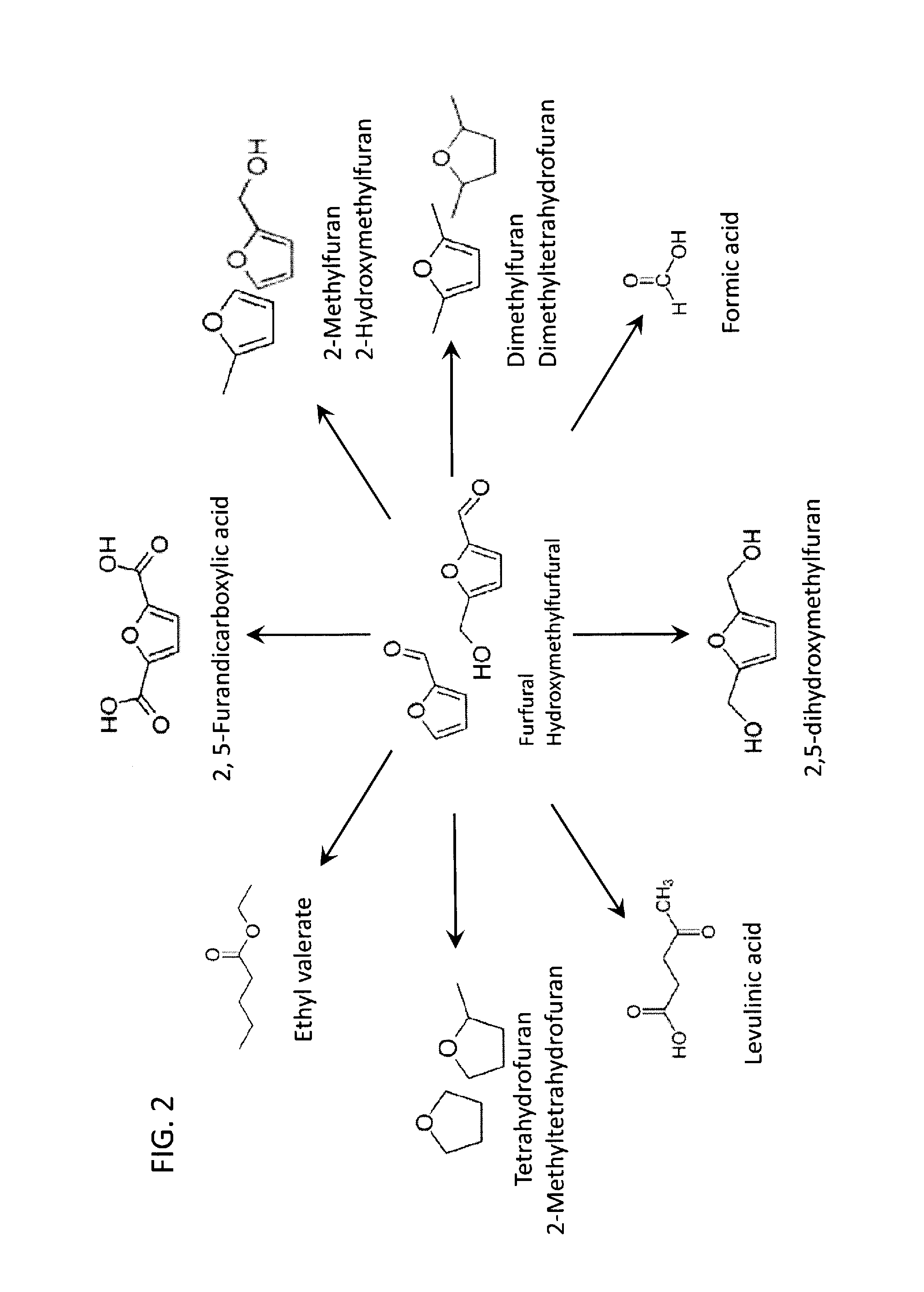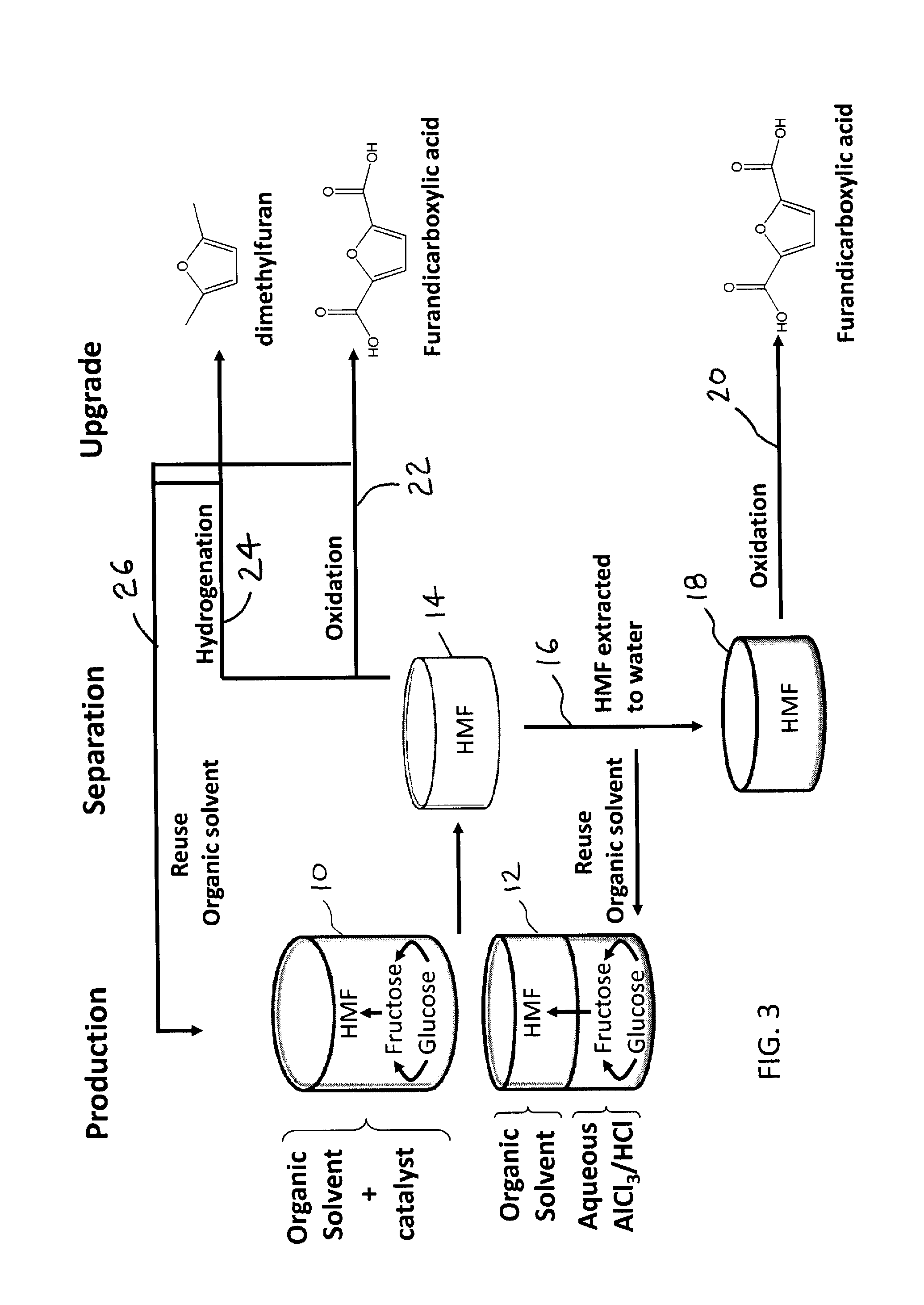Method to convert monosaccharides to 5-(hydroxymethyl) furfural (HMF) using biomass-derived solvents
a technology of hydroxymethyl furfural and monosaccharides, which is applied in the direction of organic chemistry, etc., can solve the problems of low selectivity of dehydration into hmf, complicated separation and purification of hmf from these solvents, and limited economic isomerization of glucose to fructose, so as to improve the sustainability of the biomass conversion process
- Summary
- Abstract
- Description
- Claims
- Application Information
AI Technical Summary
Benefits of technology
Problems solved by technology
Method used
Image
Examples
examples
[0098]The following examples are included solely to provide a more complete description of the process described and claimed herein. The examples do not limit the scope of the process in any fashion.
Solvents and Catalysts Used:
[0099]Table 1 depicts the various organic solvents that were used in the examples. Note that the list of solvents is exemplary and not limiting.
TABLE 1Solvents used in the examples.SolventAbbre-nameviationStructureGamma- valero- lactoneGVLGamma- hexa- lactoneGHLGamma- octa- lactoneGOLGamma- undeca- lactoneGULTetrahydro- furanTHFsec-Butyl- phenolSBP
Brønsted Solid Acid Catalysts:
[0100]“AMBERLYST”-70®-brand solid acid catalyst were obtained from The Dow Chemical Company (Midland, Mich., USA). “AMBERLYST”-brand resins are a family of commercial catalysts comprising a backbone of cross-linked polystyrene modified with sulfonic acid groups. “AMBERLYST” is a registered trademark of Rohm and Haas Company, Philadelphia, Pa. (a wholly owned subsidiary of The Dow Chemica...
PUM
| Property | Measurement | Unit |
|---|---|---|
| wt % | aaaaa | aaaaa |
| wt % | aaaaa | aaaaa |
| size | aaaaa | aaaaa |
Abstract
Description
Claims
Application Information
 Login to View More
Login to View More - R&D
- Intellectual Property
- Life Sciences
- Materials
- Tech Scout
- Unparalleled Data Quality
- Higher Quality Content
- 60% Fewer Hallucinations
Browse by: Latest US Patents, China's latest patents, Technical Efficacy Thesaurus, Application Domain, Technology Topic, Popular Technical Reports.
© 2025 PatSnap. All rights reserved.Legal|Privacy policy|Modern Slavery Act Transparency Statement|Sitemap|About US| Contact US: help@patsnap.com



